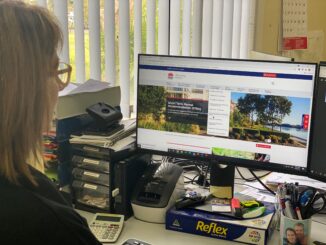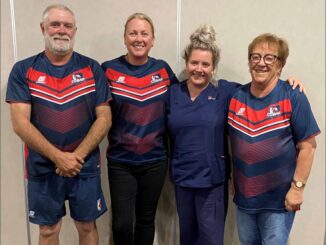
According to a recent report from the Grattan Institute, if you live in Cobar, you’re paying $600 more in rates than a resident of Mosman in Sydney’s North Shore but you’re much more likely to hit a pothole on your drive home.
Transport and Cities Program Director at the Grattan Institute, Marion Terrill said the new report shows Cobar is getting a raw deal for its local roads.
“We’ve crunched the numbers on the federal government’s main grants program, the Financial Assistance Grants, and found that it’s leaving councils like yours worse off,” Ms Terrill said.
“Councils like Cobar are over-burdened and under-resourced, yet the federal government is sending too much scarce funding to those like Mosman.
“Cobar Shire Council manages more than 2,300 kilometres of roads, spread over a landmass of 46,000 square kilometres.
“Meanwhile, Mosman Council maintains a road network just 90 kilometres long, over a land area of less than 10 square kilometres.
“For remote councils like Cobar, it’s more expensive to provide other services too.
“The cost of basic responsibilities such as collecting bins and spraying weeds is higher when residents are spread far and wide.
“And remote councils often need to step in and provide key services like childcare at a loss when it is unprofitable for the private sector,” Ms Terrill reported.
She said remote councils face major challenges finding the cash to meet these costs.
“Despite charging residents much more per person, Cobar Shire Council only brings in about $7 million each year in rates revenue.
“With a larger, denser population, Mosman Council can charge its wealthier residents less and still bring in $30 million from rates.
“To make matters worse, rural and remote councils can’t raise revenue from other sources the way metropolitan councils can.”
She said it’s a lot harder to charge for parking in Cobar than it is in Mosman.
“The federal government gives over $3 billion in untied grants each year to help address this mismatch in costs and revenue.
“But the way funding is given out means many councils are struggling to stay afloat.
“Remote councils like Cobar typically need to increase their maintenance spending by 75 per cent, just to stop their roads from deteriorating, let alone improve them.
“Unless something changes, roads in remote areas are going to go from bad to worse, and other services are likely to be affected too.
Ms Terrill said Cobar residents deserve better.
“Drivers in remote areas are more likely to have an accident, and badly maintained roads are partly to blame.
“Neglecting outback councils doesn’t just hurt the local community but the rest of the country as well.
“This is because country roads are often important links for trucks and essential services,” she said.
“In our latest report, ‘Potholes and pitfalls: How to fix local roads’, we argue that overall funding needs to increase.
“But regardless of whether there is a boost in funding, fixing three problems with the way grants are allocated would leave councils like Cobar better off.
“First, all councils are guaranteed some funding, even if they don’t need it.
“This means self-sufficient councils like Mosman are getting too big a share at the expense of remote councils like Cobar.
“Second, Cobar and Mosman have very different abilities to bring in revenue, but a big chunk of the grants – known as the local roads component – doesn’t reflect this.
“To fully fund Mosman’s 2021 road maintenance budget, the council would have needed to collect just $70 from every resident.
“For Cobar it’s 15 times that, at $1,090 per person.
“By ignoring how hard it is to raise revenue in Cobar, the local roads component isn’t sending funding where it is needed most.
“Third, remote councils in some states and territories receive far less than similar councils elsewhere in the country.
“States are allocated most of their funding based only on the size of their population.
“This means that states and territories with more regional and remote councils have their funding spread more thinly.
Ms Terrill said the three problems call for three solutions.
“First, the federal government should lower the minimum amount guaranteed to all councils, freeing up millions for the councils – like Cobar – that need it the most.
“Second, it should give out all the grants in a way that considers both the costs and revenue of councils.
“And finally, it needs to change the distribution of funding to the states, so that it reflects the differences between them,” she suggested.
“Critics might say that councils that can’t fund themselves just aren’t viable and should be amalgamated.
“But large, amalgamated councils have a tough time understanding the different needs of the communities in their area.
“And remote councils in particular would need to stretch over many different regions,” she said.
“Local councils like Cobar Shire Council are important, and they’re getting a raw deal under the current system.
“To stop our roads going backwards, overall funding needs to increase.
“But redistributing what’s already available would go a decent way towards filling the potholes,” Ms Terrill said.
The full report is available at www.grattan.edu.au.


